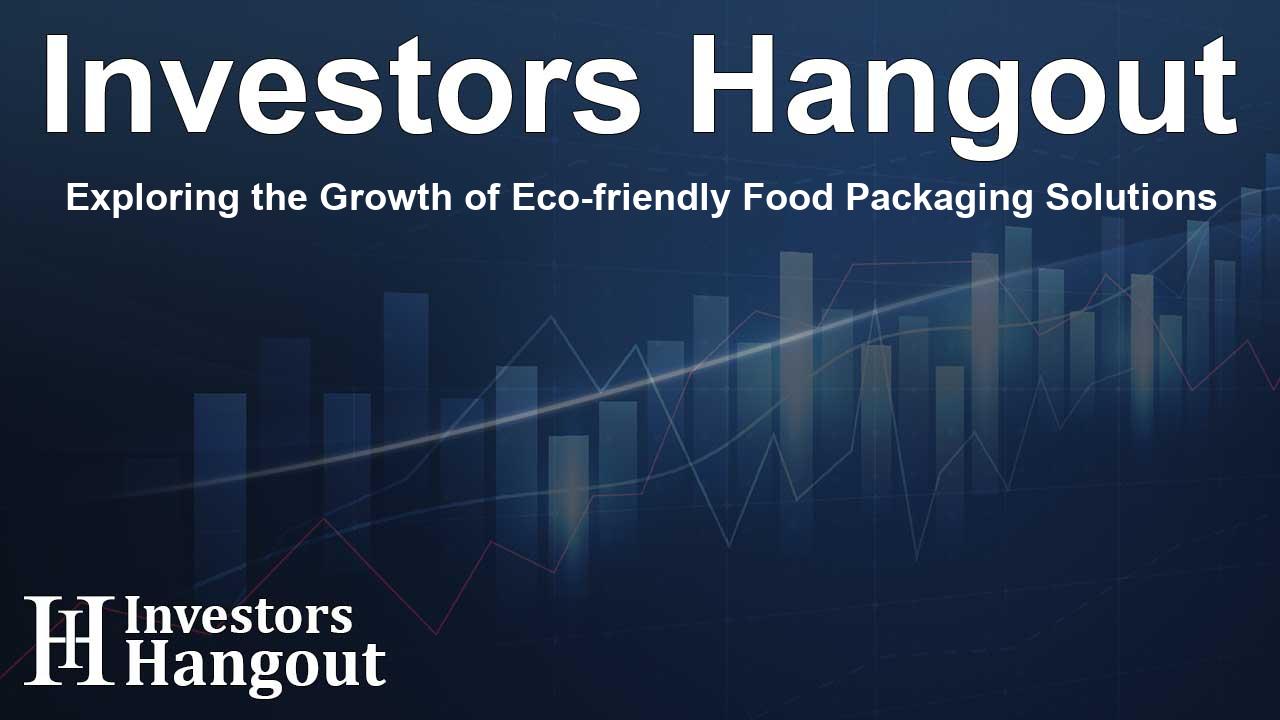Exploring the Growth of Eco-friendly Food Packaging Solutions

Eco-friendly Food Packaging Market Overview
The eco-friendly food packaging market is witnessing significant momentum as it is expected to grow beyond USD 392.37 billion over the next few years. With increasing environmental concerns and a shift towards sustainable practices, companies are prioritizing eco-friendly materials in their packaging solutions. This movement is being propelled by key players who are adopting strategies such as acquisitions and collaborations to innovate and develop new technologies in the field.
Driving Factors Behind Market Growth
One of the primary catalysts for this market growth is the surge in consumer consciousness regarding environmental issues. Plastic pollution, which affects marine ecosystems severely, has spurred both businesses and consumers to seek more sustainable options. A staggering amount of plastic waste continues to flood our oceans, leading to the demand for alternative packaging solutions that are kind to the planet.
Emergence of Conscious Consumerism
With the rise of conscious consumerism, brands can no longer ignore the environmental impact of their packaging choices. Eco-friendly packaging options, often made from recycled or biodegradable materials, have become essential in attracting today's environmentally aware consumers. Companies making this switch report increased sales, bolstered brand loyalty, and a commitment to long-term sustainability.
Innovative Solutions in Eco-friendly Packaging
Innovations in eco-friendly food packaging are transforming traditional practices. Noteworthy companies like Tetra Pak and Amcor are pioneering advancements, with Tetra Pak offering plant-based cartons made from FSC-certified materials that significantly reduce carbon footprints. Meanwhile, Amcor is progressing towards a goal of creating entirely recyclable or reusable packaging by 2025, demonstrating a commitment to global sustainability efforts.
Major Trends in the Eco-Friendly Packaging Sector
The eco-friendly packaging landscape is evolving, marked by major trends such as the increased use of compostable materials, shift towards reusable packaging solutions, and the integration of smart packaging technologies. These trends are crucial for both manufacturers and consumers as they work together to reduce waste and promote sustainable consumption habits.
Compostable Materials Gain Traction
Compostable plastic packaging is becoming a staple for households as brands strive to provide certified solutions that consumers can compost with ease. Certifications like the TÜV Austria's European OK Compost Home standard serve as trust indicators for consumers, guiding them towards more eco-friendly choices.
Reusable Packaging Models on the Rise
Moreover, reusable packaging is gaining traction in the foodservice industry, with takeout services adopting reusable solutions to cut down on waste. This trend supports a circular economy by encouraging customers to return containers for reuse, ultimately leading to reduced environmental impact.
Challenges Facing the Industry
Despite the positive trajectory, the eco-friendly food packaging market encounters obstacles. Regulatory complexities and insufficient infrastructure for recycling pose significant challenges. Not all regions have the facility to efficiently process biodegradable materials, making it imperative for companies to advocate for better regulations while simultaneously investing in innovations to facilitate broader acceptance of eco-friendly packaging solutions.
Resistance from Traditional Packaging Industries
Additionally, resistance from traditional packaging industries is another barrier. Established players often hesitate to adopt new technologies due to investments made in conventional packaging infrastructure. Transitioning to eco-friendly solutions requires substantial commitment and may disrupt established supply chains.
Future Outlook for Eco-Friendly Packaging
Looking forward, the eco-friendly food packaging market is expected to continue its upward trend fueled by technological advancements and increased material sustainability. Companies dedicated to creating biodegradable and recyclable options are playing an integral role in addressing environmental concerns and meeting consumer expectations.
Corporate Sustainability Commitments
Major corporations have set ambitious goals regarding packaging sustainability, such as achieving 100% recyclable or compostable packaging by 2030. The focus on eco-friendly packaging is not only a response to consumer demands but also serves as a key element in enhancing brand reputation and corporate social responsibility.
Frequently Asked Questions
What is the expected size of the eco-friendly food packaging market?
The eco-friendly food packaging market is projected to exceed USD 392.37 billion by 2034.
What materials are commonly used in eco-friendly packaging?
Eco-friendly packaging often utilizes materials like recycled paper, plant-based plastics, and biodegradable substances.
What are the benefits of using eco-friendly packaging for businesses?
Benefits include enhanced brand image, compliance with regulations, cost savings in the long run, and meeting consumer demand for sustainability.
How can consumers identify eco-friendly packaging?
Consumers can look for certified eco-labels and symbols that indicate recyclability and compostability.
What challenges does the eco-friendly packaging market face?
Challenges include regulatory complexities, limited recycling infrastructure, and resistance from traditional packaging industries.
About The Author
Contact Caleb Price privately here. Or send an email with ATTN: Caleb Price as the subject to contact@investorshangout.com.
About Investors Hangout
Investors Hangout is a leading online stock forum for financial discussion and learning, offering a wide range of free tools and resources. It draws in traders of all levels, who exchange market knowledge, investigate trading tactics, and keep an eye on industry developments in real time. Featuring financial articles, stock message boards, quotes, charts, company profiles, and live news updates. Through cooperative learning and a wealth of informational resources, it helps users from novices creating their first portfolios to experts honing their techniques. Join Investors Hangout today: https://investorshangout.com/
The content of this article is based on factual, publicly available information and does not represent legal, financial, or investment advice. Investors Hangout does not offer financial advice, and the author is not a licensed financial advisor. Consult a qualified advisor before making any financial or investment decisions based on this article. This article should not be considered advice to purchase, sell, or hold any securities or other investments. If any of the material provided here is inaccurate, please contact us for corrections.
